|
|
DMAP - the Deer Management Assistance Program, right? Well, have you heard about the other DMAP, the Duck Management Assistance Program?
The Duck Management Assistance Program may not exist, but that doesn't mean habitat management projects that support deer can't also help ducks. In this month's Cooperator Update, you will find management practices for deer, like oak forest management, as well as some key strategies and resources you can use on your property to enhance habitat for deer and ducks.

Antlerless Tag Requests
It's that time of year again! Requests for DMAP antlerless tags can now be made by contacting your local DMAP biologist. Before contacting them, here are a couple of friendly reminders:
-
Who qualifies for tags: To qualify for tags, you must be a current level 2 or 3 DMAP member who has had a property assessment within the last three years that indicated negative herd or habitat health impacts from deer overabundance and paid your DMAP fees.
-
Making a request: Tag requests can be made by emailing your local DMAP biologist the following information:
- DMAP ID number
- Name(s) of the individual(s) requesting tags (make sure all individuals requesting tags have an up-to-date DNR customer ID number in MyDMAP)
- Number of tags requested
-
Request deadline: All tag requests (including transferring tags between hunters) must be submitted by Oct. 23, 2024.
If you have questions on DMAP antlerless tags, please feel free to contact us at DNRDLFWPWMDMAPHelp@wisconsin.gov.
|
|
 Upcoming In-Person Workshops
Wetland Habitat – Glacial Habitat Restoration Area Field Day

Aug. 23, 2024 | 9 a.m. – noon | Waupun
Are you interested in managing your wetland or grassland habitat? Have you ever wanted to put in a scrape but were unsure if you had the right soil? The DMAP team is partnering with Pheasants Forever to provide a workshop on private land wetland and grassland habitat management. During this field day, you’ll see on-the-ground habitat projects and explore available cost-share programs to fund work on your property. For more information, check out the workshop flyer.
Register for this workshop on the Pheasants Forever website.
|
Sick To Fit – Deer Health Workshop
Have you ever wanted to learn more about deer health and the CWD sampling process? We have great news! We plan to hold an in-person workshop at the DNR CWD Processing Center in Poynette, Wisconsin, in October. This workshop will give you an in-depth look at CWD in Wisconsin and teach you how to assess deer health based on body condition. Please be on the lookout for more info in the coming months.
Oak Wilt
The most widespread and devastating disease facing oak in Wisconsin is oak wilt. Oak wilt is a fungal disease transferred through open wounds via insects during high-exposure periods. At last month’s DMAP workshop with Paul Cigan, DNR forest health specialist, we discussed how to identify, manage and control oak wilt. Here are three takeaways for protecting your oaks: |
|
 |
- It is crucial to identify oak wilt early, as the rate of successful treatment declines rapidly.
- Follow the oak harvesting guidelines to combat the spread of this disease.
- A diverse forest is often the most important factor in limiting the spread of any disease.
Want to learn more about oak wilt and its management?
Check out the full workshop recording.
|
|
 Wetland Restoration: Does Your Property Have Potential?
Peter Zieger, Wisconsin Waterfowl Association Project Director
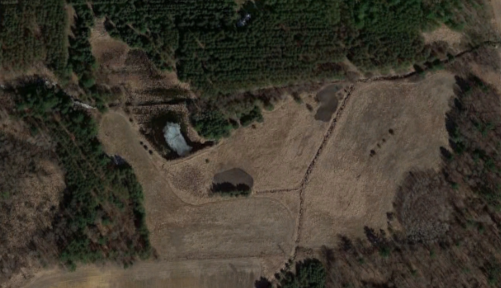
Wetlands are one of the most diverse and ecologically important habitats. In fact, wetlands support nearly 75% of Wisconsin’s wildlife species at some point in their lifecycle. In this article, we will cover the essentials of wetland restoration projects and how the Wisconsin Waterfowl Association can help.
Read Wetland Restoration: Does Your Property Have Potential.
|
Photo credit: Peter Zieger
|
|
Ducks And Bucks
Kaleb Bolder, Northeast DMAP Biologist
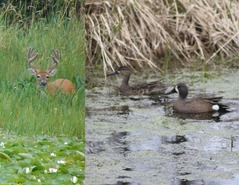 |
|
If you enjoy duck hunting as much as deer hunting and have wetlands on your property, you’re in luck! You can implement several management practices to help deer and ducks. This article will discuss the importance of managing land adjacent to wetlands and give recommendations on projects that can help both deer and ducks. |
Read Ducks And Bucks.
|
|
 Reed Canary Grass Management
Matt Esser, Southwest DMAP Biologist
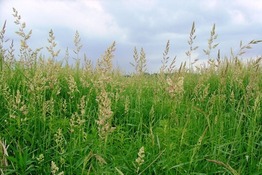
Reed canary grass is a fast-growing, perennial, cool-season invasive plant that quickly dominates areas through its underground rhizomes. Its aggressive growth makes it difficult for native species to thrive, as it forms dense sod mats that crowd out other plants. This invasive species is highly adaptable and can grow in wetlands, creek and river bottoms and upland wooded areas. For more information on control methods and the timing of treatments, visit the link below.
Read the Reed Canary Grass Management Guide.
|
Photo credit: Wisconsin Wetlands Association
|
|
|
|
 This Month's Question
White-tailed deer need a variety of habitat components to meet their year-round needs. As their diet and cover needs shift, so do the ecosystems they rely on. For example, forests (including oak) provide the woody browse, acorns and thermal cover needed in fall and winter. Grasslands and wetlands provide forage and cover in the spring and summer through herbaceous vegetation and tall grass. The closer in proximity these habitat components are and the better their quality, the more deer that can be supported. But that doesn’t mean all ecosystems have the same impact on deer density. In Wisconsin, which ecosystem has the largest influence on deer density?
a. Deciduous forest
b. Coniferous forest
c. Shrubby wetland
c. Herbaceous wetland
d. Grasslands
Last Month's Answer
Last month's feature article discussed deer selectivity in reference to browse preference. We covered some of the highest preferred browse species as well as the lowest. With that in mind, even some of the highest preferred browse species stand out above the rest.
Of the species provided below, red oak is the most preferred browse species. Although white oak is commonly mistaken as the most preferred, it is likely only due to the preference for their acorns. Check out this article to learn more about deer browse preference.
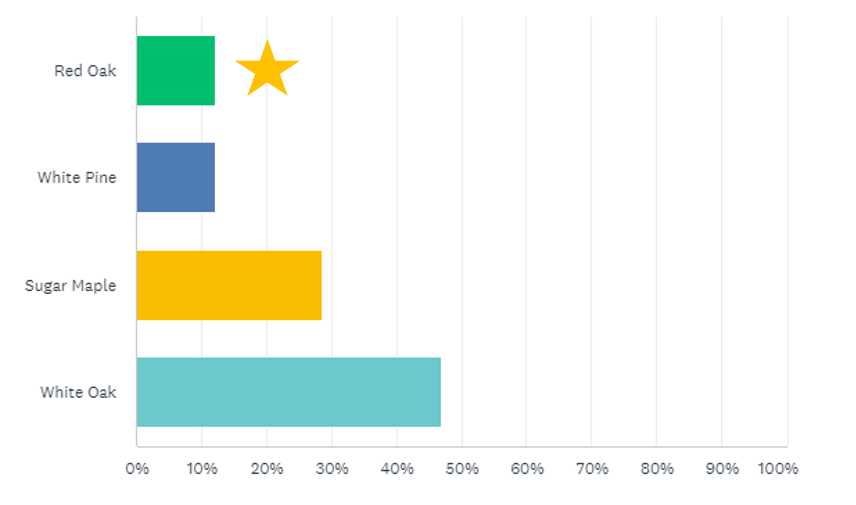
|
|
 Have questions or suggestions or want tags? Reach out to your local DMAP biologist.
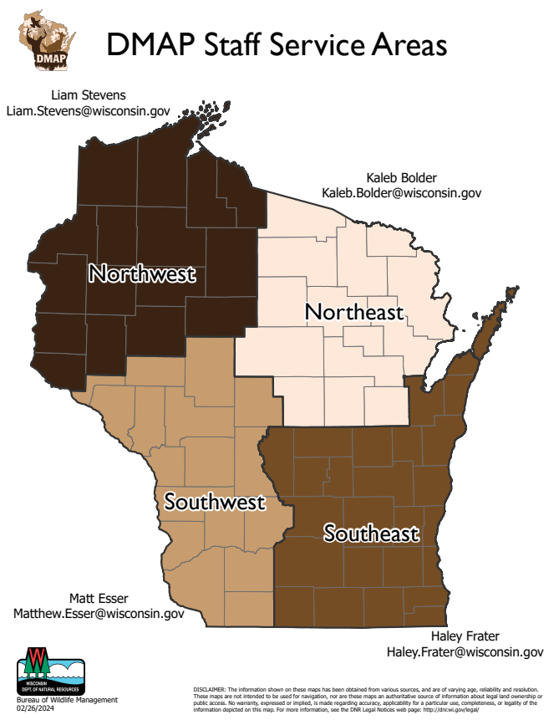
|
|
|
|